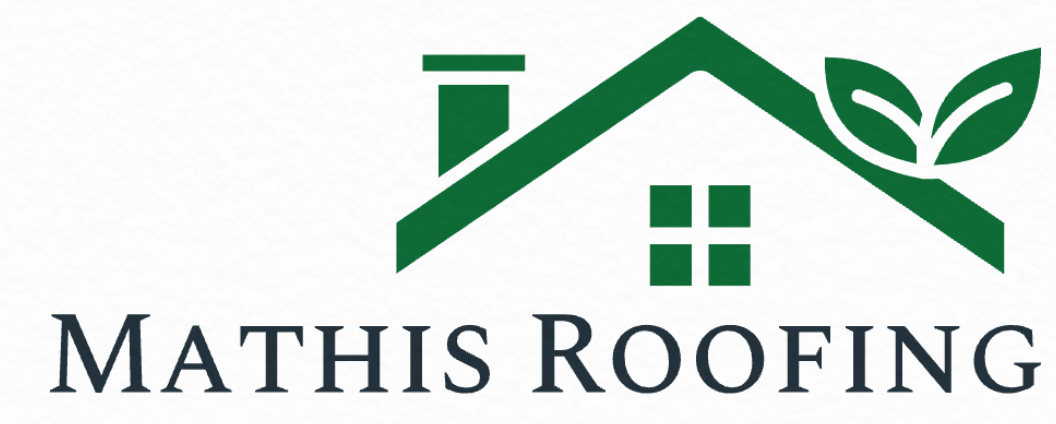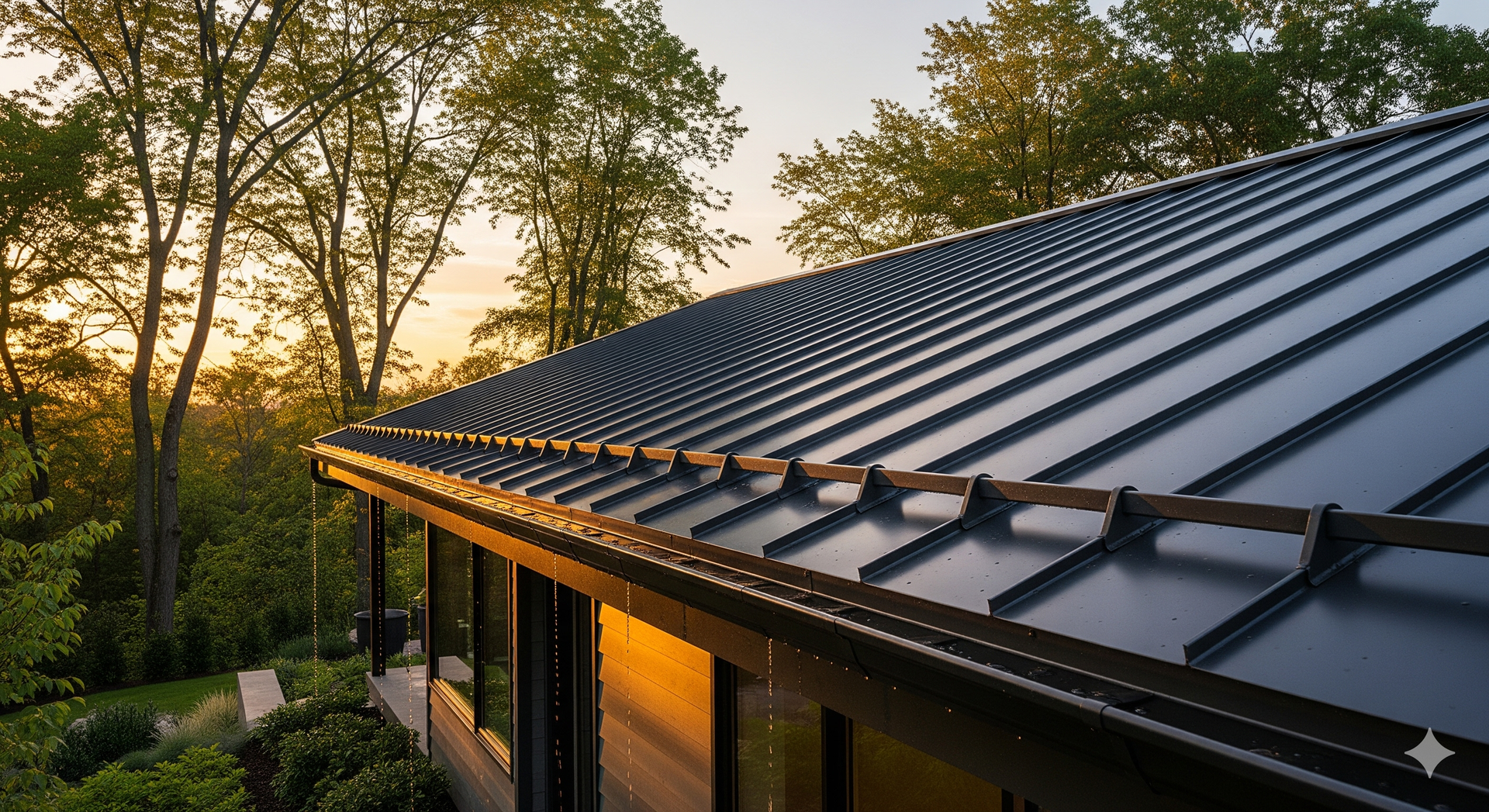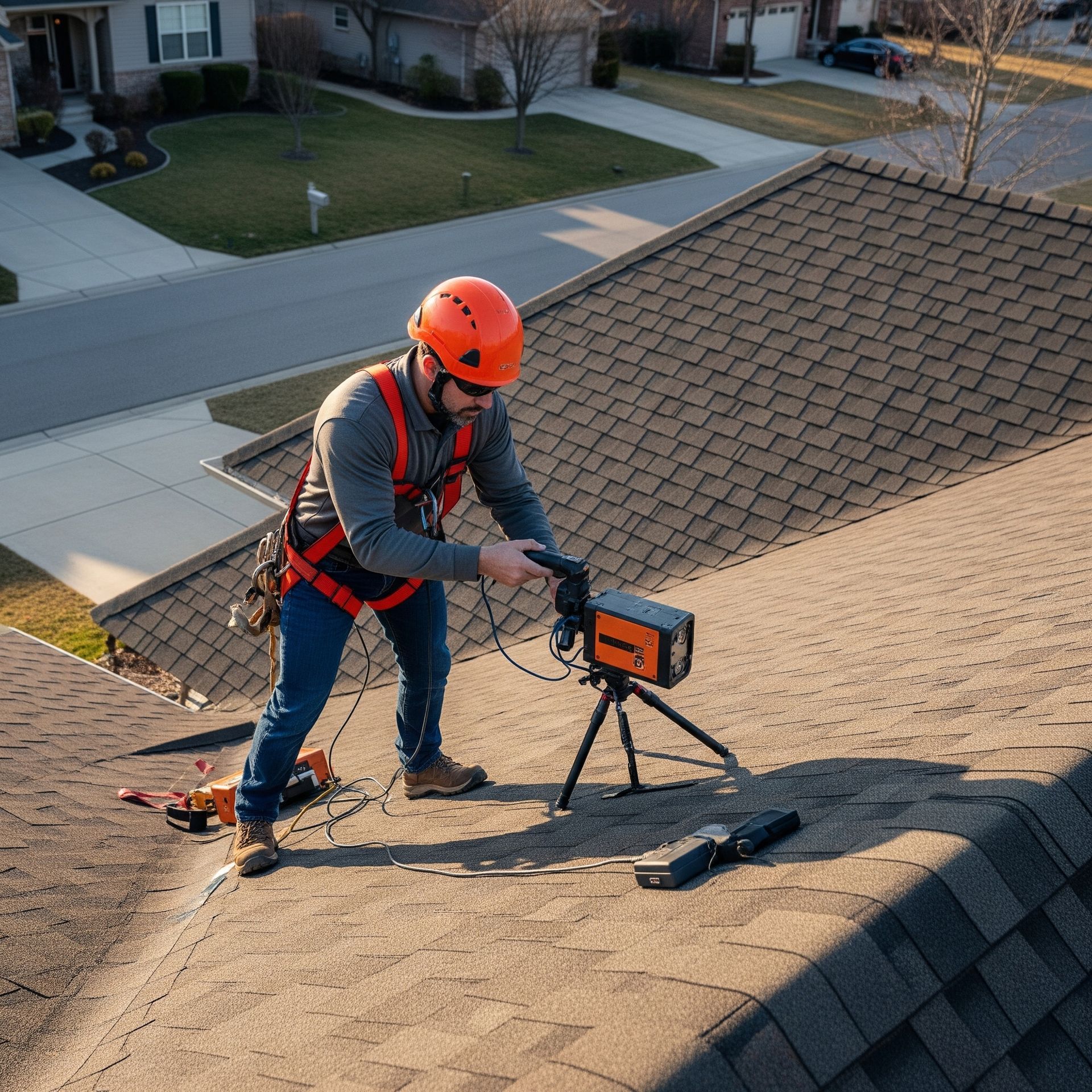Differences Between Asphalt and Metal Roofs Explained
Choosing a roofing material is one of the most significant decisions homeowners face, as it impacts a home’s durability, appearance, and energy efficiency. Asphalt and metal roofs are two of the most popular options, each offering unique benefits and challenges. Asphalt roofs are common, affordable, and versatile, while metal roofs are known for their longevity and modern appeal. Understanding the differences between these materials helps homeowners make informed choices that align with their budget, climate, and aesthetic preferences. This article breaks down the key distinctions between asphalt and metal roofs, providing practical insights to guide your decision in getting professional roofing services.
Key Takeaways
- Asphalt roofs are generally more affordable upfront, while metal roofs have higher initial costs but longer lifespans.
- Metal roofs outlast asphalt, often enduring 40-70 years compared to 15-30 years for asphalt.
- Asphalt requires more frequent repairs, while metal is low-maintenance.
- Metal roofs reflect heat, potentially reducing cooling costs, unlike asphalt.
- Asphalt offers more color and style variety, while metal provides a sleek, modern look.
- Metal roofs are often recyclable, making them a greener choice.
Overview of Asphalt Roofs
Asphalt roofs, particularly asphalt shingles, are the most common roofing material in the United States due to their affordability and versatility. Made from a fiberglass or organic base coated with asphalt and ceramic granules, these shingles are designed to protect homes from weather while adding visual appeal. They come in two main types: three-tab shingles, which are flat and budget-friendly, and architectural shingles, which offer a textured, dimensional look.
Asphalt roofs are popular for their ease of installation and wide availability. They suit a variety of home styles, from traditional to contemporary, and are available in numerous colors and textures. However, their lifespan is shorter than some alternatives, typically lasting 15 to 30 years depending on quality, climate, and maintenance. Asphalt shingles perform well in moderate climates but may crack in extreme cold or degrade faster in intense heat.
Overview of Metal Roofs
Metal roofs are made from materials like steel, aluminum, copper, or zinc, often formed into panels or shingles. They are gaining popularity for their durability, energy efficiency, and modern aesthetic. Metal roofs come in various styles, including standing seam panels, corrugated sheets, and shingles that mimic traditional materials like slate or tile. They are highly resistant to weather elements, including wind, hail, and fire, making them a strong choice for diverse climates.
The
lifespan of a metal roof is one of its biggest advantages, often lasting 40 to 70 years or more with proper care. While the upfront cost is higher than asphalt, the long-term savings from reduced maintenance and replacements can offset the initial investment. Metal roofs are also lightweight, reducing structural stress on homes, and they often come with warranties ranging from 20 to 50 years.
Key Differences Between Asphalt and Metal Roofs
To make an informed decision, it’s essential to compare asphalt and metal roofs across several factors, including cost, durability, maintenance, energy efficiency, aesthetics, and environmental impact.
Cost and Installation
Asphalt roofs are generally more affordable, with installation costs ranging from $3 to $7 per square foot, depending on the shingle type and labor rates. This makes them a go-to option for budget-conscious homeowners. Installation is straightforward, and many contractors are experienced with asphalt shingles, keeping labor costs low.
Metal roofs, by contrast, have higher upfront costs, typically ranging from $8 to $16 per square foot, including materials and installation. The complexity of metal roof installation and
inspections often requires specialized contractors, which can increase labor expenses. However, the longevity of metal roofs may result in lower costs over time due to fewer replacements.
Durability and Lifespan
Asphalt shingles are durable for their price but are prone to damage from high winds, hail, or extreme temperatures. In harsh climates, they may crack, curl, or lose granules, requiring repairs or replacement within 15 to 30 years. Regular inspections can extend their lifespan, but they are less resilient than metal.
Metal roofs excel in durability, resisting wind speeds up to 140 mph, hail, and fire. They are less likely to crack or degrade, even in extreme weather, and can last 40 to 70 years with minimal upkeep. This makes metal a better choice for homeowners seeking a long-term roofing solution.
Maintenance Requirements
Asphalt roofs require more maintenance than metal. Debris like leaves or branches can trap moisture, leading to moss or algae growth, especially in humid climates. Shingles may need periodic cleaning, and damaged ones must be replaced promptly to prevent leaks. Regular inspections are recommended to catch issues early.
Metal roofs are low-maintenance, resisting moss, algae, and debris buildup. They typically require only occasional cleaning to maintain appearance. However, metal roofs may need inspections for loose fasteners or scratches in the coating, which could lead to rust if untreated. Overall, metal demands less frequent attention.
Energy Efficiency
Asphalt shingles absorb heat, which can increase cooling costs in warm climates. However, modern asphalt shingles with reflective coatings can improve energy efficiency to some extent. These “cool roof” options reflect more sunlight, reducing heat transfer into the home.
Metal roofs are highly
energy-efficient, reflecting sunlight and reducing heat absorption. This can lower cooling costs by up to 20% in hot climates, according to some studies. Metal roofs with reflective coatings or paints enhance this benefit, making them ideal for energy-conscious homeowners in sunny regions.
Aesthetic Appeal
Asphalt shingles offer a wide range of colors, textures, and styles, making it easy to match them to any home design. Architectural shingles, in particular, provide a premium look that mimics slate or wood shakes. This versatility makes asphalt a favorite for homeowners prioritizing customization.
Metal roofs have a sleek, modern appearance, with options like standing seam or metal shingles that mimic traditional materials. While the color palette is more limited than asphalt, metal roofs can be painted to suit various styles. They are especially popular for contemporary or industrial-style homes.
Environmental Impact
Asphalt shingles are less eco-friendly, as they are petroleum-based and not easily recyclable. At the end of their lifespan, most asphalt shingles end up in landfills. However, some manufacturers offer recycling programs to reduce waste.
Metal roofs are more sustainable, often made from recycled materials and fully recyclable at the end of their life. Their long lifespan reduces the need for frequent replacements, further minimizing environmental impact. For eco-conscious homeowners, metal is often the greener choice.
| Feature | Asphalt Roofs | Metal Roofs |
|---|---|---|
| Cost (per sq. ft.) | $3–$7 | $8–$16 |
| Lifespan | 15–30 years | 40–70 years |
| Maintenance | Moderate (cleaning, repairs) | Low (occasional inspections) |
| Energy Efficiency | Moderate (with cool coatings) | High (reflects heat) |
| Aesthetic Options | Wide variety of colors/styles | Modern, fewer color options |
| Eco-Friendliness | Limited (landfill waste) | High (recyclable, durable) |
Practical Considerations for Homeowners
When choosing between asphalt and metal roofs, consider your home’s location, climate, and long-term goals. In areas with extreme weather, such as heavy snow or hurricanes, metal roofs offer superior resistance. For milder climates, asphalt may suffice at a lower cost. Evaluate your budget not just for installation but for long-term maintenance and potential energy savings.
Installation timelines also differ. Asphalt roofs can often be installed in a few days, while metal roofs may take longer due to their complexity. Check local building codes, as some areas have restrictions on roofing materials. Homeowners’ associations may also dictate style or color choices, particularly for asphalt shingles.
Resale value is another factor. Metal roofs can increase a home’s value due to their durability and modern appeal, while asphalt roofs are less likely to stand out to buyers. If you plan to stay in your home long-term, metal’s longevity may outweigh its higher upfront cost. For short-term stays, asphalt’s affordability might be more practical.
How to Make the Best Roofing Choice
To choose the right roof, start by assessing your priorities. If budget and style variety are key, asphalt shingles may be the better fit. If longevity and energy efficiency are priorities, metal roofs are worth considering. Request samples or visit showrooms to see how each material looks on a home. Consult with roofing contractors to get detailed quotes and discuss installation timelines.
Check warranties for both materials. Asphalt shingles typically come with 20- to 30-year warranties, while metal roofs often have 30- to 50-year guarantees. Read reviews of manufacturers and installers to ensure quality. Finally, consider consulting a structural engineer for metal roofs, as their lightweight nature may require specific underlayment or framing adjustments.
Frequently Asked Questions
Which is cheaper, asphalt or metal roofing?
Asphalt roofing is generally cheaper, costing $3 to $7 per square foot, compared to $8 to $16 for metal. However, metal’s longevity may reduce long-term costs.
How long do asphalt and metal roofs last?
Asphalt roofs last 15 to 30 years, depending on quality and climate. Metal roofs can last 40 to 70 years with proper maintenance.
Are metal roofs noisier than asphalt during rain?
Metal roofs can be louder during heavy rain or hail, but proper insulation and underlayment significantly reduce noise levels.
Which roofing material is better for energy efficiency?
Metal roofs are more energy-efficient, reflecting heat and reducing cooling costs. Asphalt shingles with reflective coatings offer moderate efficiency.
Can I install a metal roof over existing asphalt shingles?
In many cases, yes, but it depends on local codes and the condition of the existing roof. Consult a professional to assess feasibility.
Final Thoughts
Choosing between asphalt and metal roofs depends on your budget, climate, and aesthetic preferences. Asphalt offers affordability and versatility, making it ideal for homeowners seeking a cost-effective, customizable solution. Metal roofs provide unmatched durability, energy efficiency, and sustainability, appealing to those prioritizing long-term value.
Contact a professional roofing contractor today to help with your decision-making process, when choosing between getting an asphalt or metal roof.


